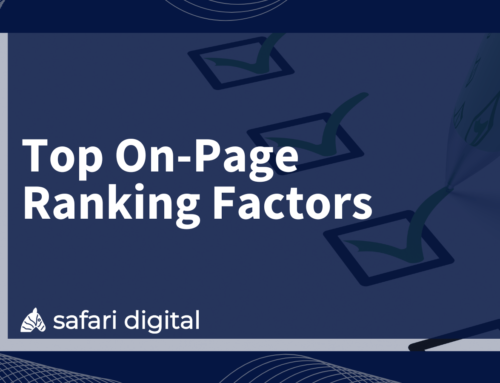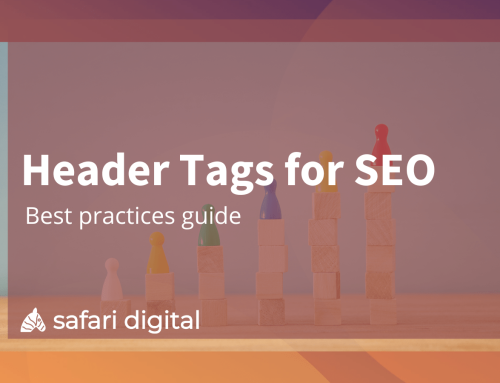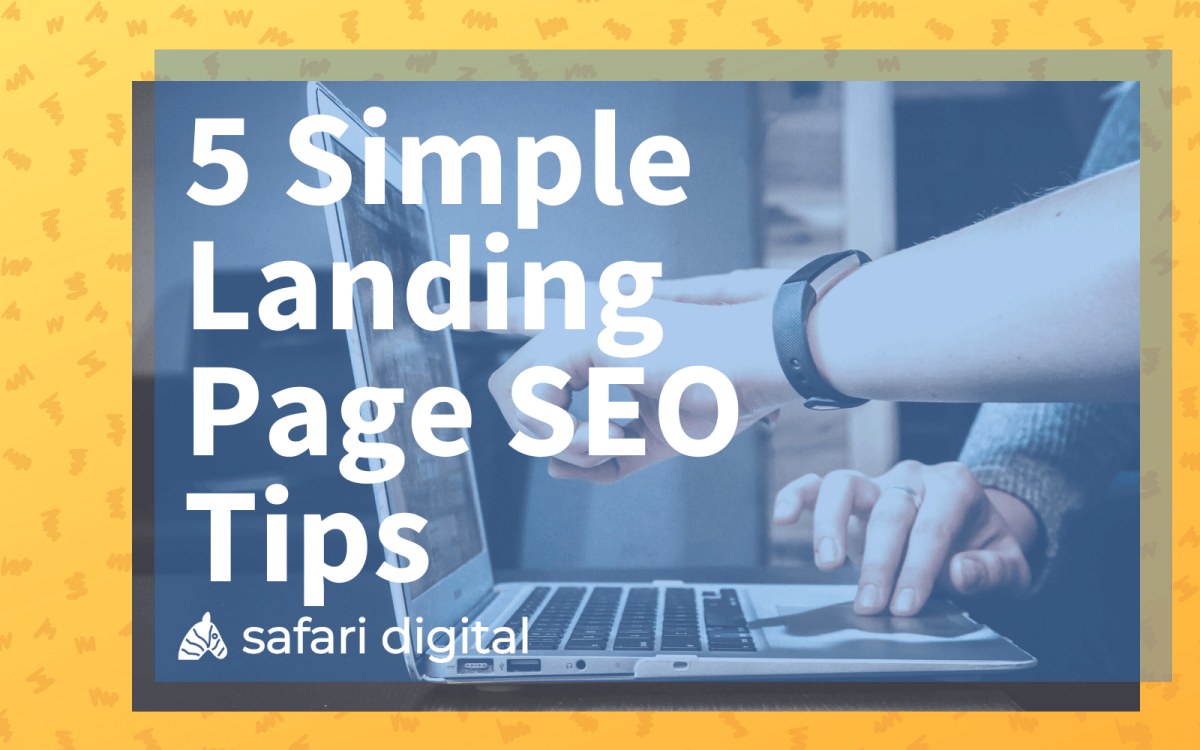
Landing page SEO is a balancing act. Striking a balance between user experience, search engine optimisation and funnelling users towards a predetermined conversion goal are all factors in creating effective landing pages.
A landing page is about directing users towards a purchase, an enquiry, or a sign-up. The purpose of a landing page is to get them to that conversion goal without distractions. On the other hand, ranking well in search engines requires more content, more links, and more on-page information than ever before.
The most recent SEO statistics indicate that the average page 1 result on Google featured 1,890 words of content. Which means ranking well and getting users towards your conversion goal without distraction is going to be a balancing act.
Acquiring traffic is essential, but it’s what you do with that traffic that counts. Landing Page SEO is about finding ways to strike a balance between a well-optimised webpage, and content that will convert visitors into paying customers.
What are Landing Pages?
Landing pages, also known as “lead capture pages” or “static pages”, are pages that appear in response to clicking on a search engine result. Landing pages are the first page that a user will come across when they land on a website. And, as you might expect, the information that users encounter on landing pages has a substantial impact on what the user does next.
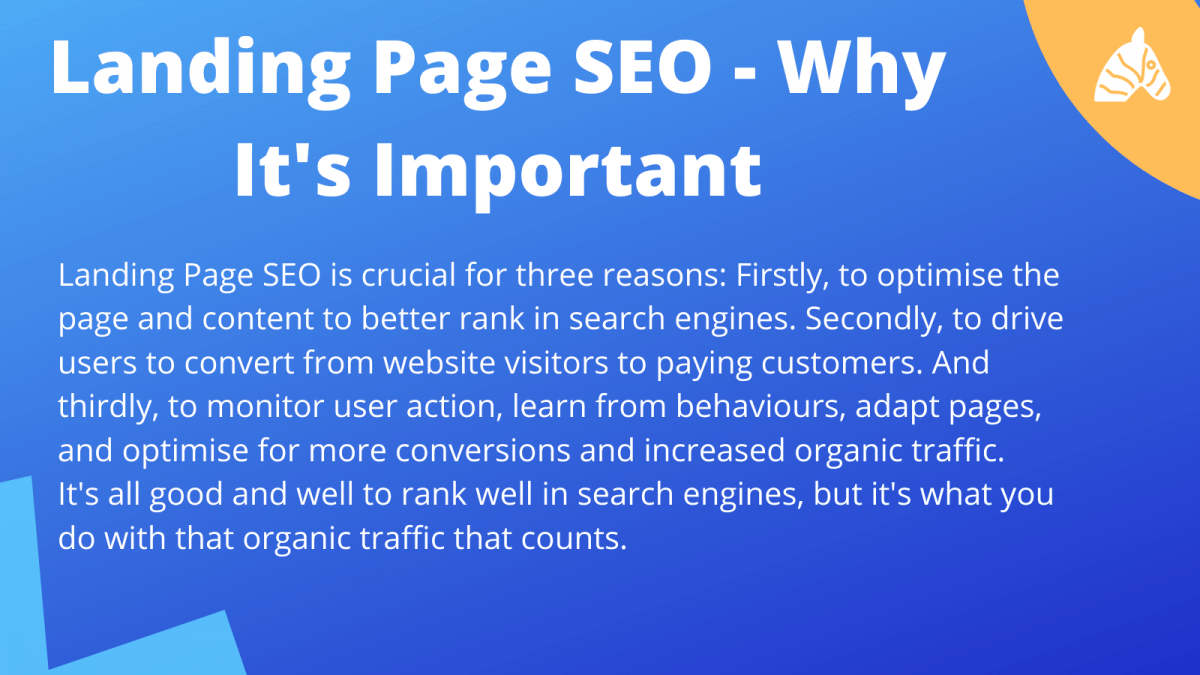
Landing pages are designed to funnel users towards a predetermined conversion goal. A landing page is different from other pages within a website as it will be structured to have a considerable influence over the user’s decision-making process. Landing pages are designed to get the user’s attention and retain it for long enough for the user to continue venturing further onto the site.
The Importance of Landing Page SEO
Landing page SEO is a practice of creating and optimising a landing page for search engines. Implementing SEO tactics into landing page adjustment creates an opportunity for these high-converting pages to rank well in Google and have users easily find them.
Over the years, Google has become more sophisticated and continues to learn more about what makes pages valuable and helpful to users. Google’s ever-evolving algorithm is directly influenced by what users want from search; and as such, the frequent updates can make landing page structure tricky to master.
Regularly optimising your landing pages gives you a chance to work with what is influencing your customers. Landing pages are an integral component of customer engagement; optimising them for SEO allows more customers to find your website and funnel them into the right direction.
Landing page SEO is all about real-life testing and finding what works for your website, and your customers. The most important thing you can do is understand which aspects can influence landing page performance and adjust accordingly.
Below you’ll find some of our best practices for landing page SEO. These landing page SEO tips should undergo testing, monitoring, and adjustment to suit only landing pages – they aren’t necessarily applicable for SEO landing pages or product pages alike.
Landing Page SEO Tips
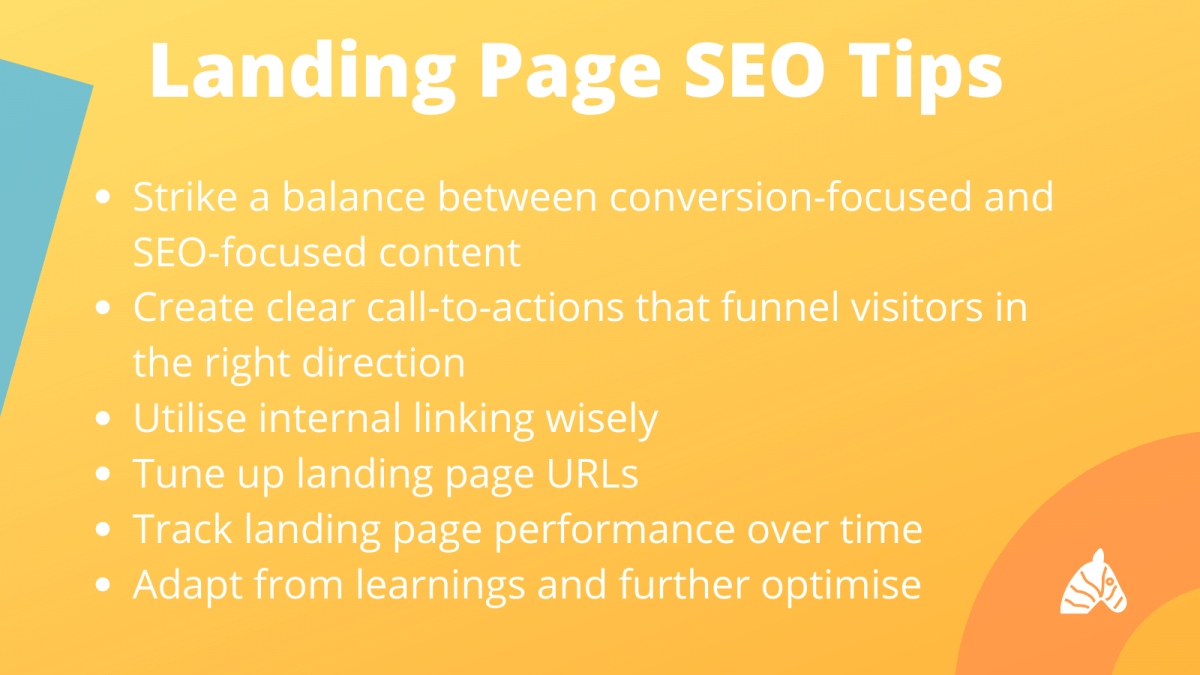
1. Balance SEO with User Experience
When creating and adapting landing pages, it’s essential to strike a balance between conversion-focused pages and SEO-optimised pages. On the one hand, conversion-focused pages are imperative because they are all about what happens when a user lands on the page, and focus on a simple, clear, and concise call-to-action. On the contrary, the primary focus of an SEO-optimised page is to rank rather than convert. These pages are all about targeting search keywords and driving organic traffic to the page.
Traditionally, pages that are optimised to perform well in the organic search engine results will contain more content to rank for more target keywords. Conversion-focused pages will not focus on content, but more on the user journey, with direct and purposeful copy and a clear call to action.
Our first landing page SEO tip is to strike a balance between a conversion-focused page and an SEO-optimised page. Ideally, you’d like to optimise a page well enough to compete for the right keywords, but not bogging down the readability of the page with excessive keywords and links.
When it comes to creating pages that perform well in the organic search results, it can be tempting to create an abundance of content, with little regard for user experience. The most recent data suggests that the average page 1 result of Google is 1890-words in length; so, how can you strike a balance between SEO and conversion?
It’s important to remember what the goal of your landing page is, where you want customers to go and what action you would like them to take from the page. Whether your landing page is funnelling users towards an enquiry page, sales page or signing up for a mailing list, make sure that these actions are accessible to the visitor.
Which leads us conveniently to the next point.
2. Funnel Customers With Call-To-Action
This landing page SEO tip speaks for itself. The purpose of a landing page is to funnel users from search engines into parts of the website that convert them into customers. Form a logical and straightforward user journey by creating a clear call-to-action (CTA).
Creating a compelling CTA with a strong command and concise direction will push users to make the next step your business wants them to take. For a service-based business, this might be an explicit “request a call back” or “free quote” button. In terms of e-commerce sites and ecomm SEO services, a clear CTA might be a “add to cart” button. Effective CTAs relate directly to the content on the landing page, and to the user’s motivation for taking action on that content.
Take the time to conduct some real-life testing with CTAs. Send a clear message about the benefits associated with action using clear CTA buttons. Don’t overdo it – try to implement a CTA within the first couple of scrolls on a landing page, but don’t make the buttons too pushy or spammy.
If you’re not a strong writer, hire a sales copywriter who can guide you on how to write copy that converts. Understanding what resonates with customers and what sort of vernacular is going to encourage them to take the next step in the buyer journey is crucial for the success of your landing pages.
3. Utilise Internal Linking Wisely
Links are a fundamental aspect of search engine optimisation. Whether you’re a new website trying to gain authority and improve your ranking potential, or you’re an existing site looking to strengthen the most important pages on your website. In essence, links play a critical role in how your content appears in the search engine results pages.
When it comes to building backlinks for your website, the formula is simple. A web page that receives relevant, authoritative backlinks from another website has a far better chance of ranking well in Google. When it comes to internal linking, the discussion is far more complicated. Strategic internal linking is an important SEO tool that webmasters have complete control over in the optimisation process. Unlike backlinks, webmasters have complete control over the internal links that appear on their website.
This article will examine the complicated, but critical role that internal links play in improving the way that your website appears in the search engine results pages and helping search engine bots to understand the hierarchy of your site content.
What is an Internal Link?
Before we delve into the complications of internal linking, let’s start with the basics. Internal linking refers to hyperlinks that point to webpages on the same domain that the link exists on. An internal link is defined as a link where the target and source URL is from the same domain.
Why are they important?
Internal links play an essential role in navigating users around your website and helping them to find content that is relevant or related to the web page that they are currently browsing. Internal links are useful because:
- They help users to find similar or related content on your website
- They can help Google to index and crawl similar pages on your website
- They can help Google to understand the most critical pages on your site
- They create an information hierarchy that allows search bots to understand the layout of your site
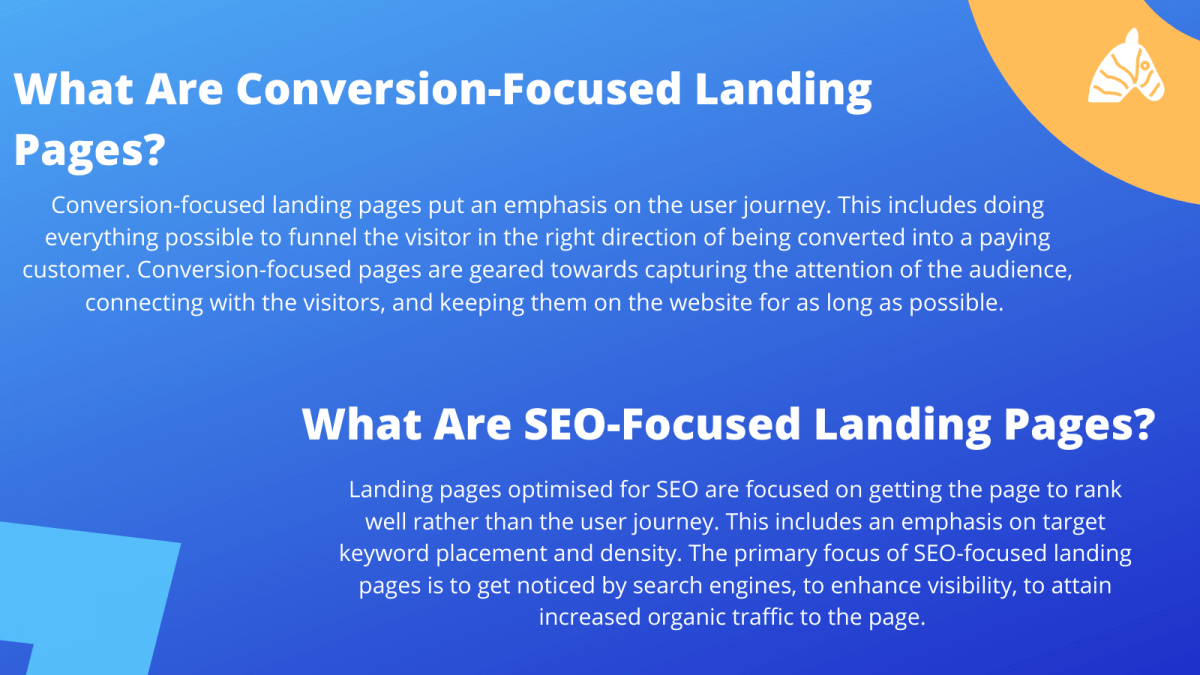
4. Optimise Landing Page URLs
Ideally, your website structure will provide a clear URL structure. While it might be tempting to rely on the simplicity of generic permalink structures, creating individual and customised URLs for landing pages can go a long way in SEO. Search engines and users will be able to track a logical structure, and clear URLs confirm brand consistency and keep things neat and tidy.
The URL of your landing pages plays a vital role in communicating information to search engines about the content on the page. Importantly, your URL structure also provides signals to search engines about where landing pages fit into your overall site hierarchy.
Landing page SEO will include not only creating a logical URL structure but also using target keywords in those said landing page URLs. Keyword usage in URLs will impress search engines and give your site the added boost of visibility each time searchers use your targeted key terms. Use your main keyword in your landing page URL, but don’t make it too long or too spammy.
Keep it simple. When you’re planning the URL structure for your website, leave room for new pages that you might want to create down the line. Create a permalink structure that is easy to follow and makes sense for search bots and users. Here are a few essential tips to keep in mind for landing page URL structure:
1. Be concise – most search engines will only show the first 65 characters in the URL, which includes your domain. For instance, the first 33 characters of the URL on this page are used to show “https://www.safaridigital.com.au/”.
2. Front-load keywords – just like a page title, place the most relevant keywords at the start of your URL. Keywords that appear earlier in a URL are given more weight than those that appear later on.
3. Dash to separate – don’t force multiple words together to create a long (and unreadable) URL. Instead, separate words with a dash. Words that are separated by a URL are easier for search engines and for users to understand.
5. Track Landing Page Performance
Landing page SEO measurement is crucial for any marketing campaign performance. Once the organic traffic begins to flow onto your landing pages, it’s essential to take note of what users do after they land on the page. Tracking your landing page performance gives you the ability to test what works and what doesn’t. There are several tools – including Google Analytics – that allow webmasters to measure landing page success.
Making real-life tests (think: A/B testing) and collecting data from user behaviour gives webmasters the ability to make the adjustments and tweaks that will maximise page performance. Tracking the success of your landing page SEO helps you better understand your audience and what converts them to paying customers.
The most valuable data that you will collect from your landing pages will only be available once they are live on your site. Once pages are live, you can use the data accumulated through Google Analytics, Search Console and a whole host of third-party tools to track how users are interacting with your website. Refining your landing pages over time is the key to creating the most effective landing pages.
Landing pages do not need to be perfect when you set them live. However, you should continuously be honing and tweaking them based on the data that you are collecting. The sites and businesses that create the most effective landing pages are those that are constantly updating them in line with how users are finding and interacting with the pages.
Make the Most of Your Traffic
Getting visitors to your website is all good and well, but it’s what happens next that counts. Even seasoned professionals from our Brisbane SEO team find that the hardest part is striking a balance between ranking well and converting high volumes.
Don’t expect to build the perfect landing pages the first time around. Landing page SEO is all about creating, testing, learning, and adapting for your users. Start by implementing the above landing page SEO tips and changing them to best suit your business – before you know it, your landing pages will be converting organic traffic into qualified, high-purchase intending customers.
Remember, you’re better off having 10 visitors that convert at 10% than 1,000 visitors that convert at 0%. Creating landing pages that convert and creating landing pages that rank well in the organic search results are challenging in their own right. Effective landing pages combine SEO principles with UX principles to create landing pages that can hold their own in the organic search results, and funnel users towards your desired conversion point once they are on your site.


